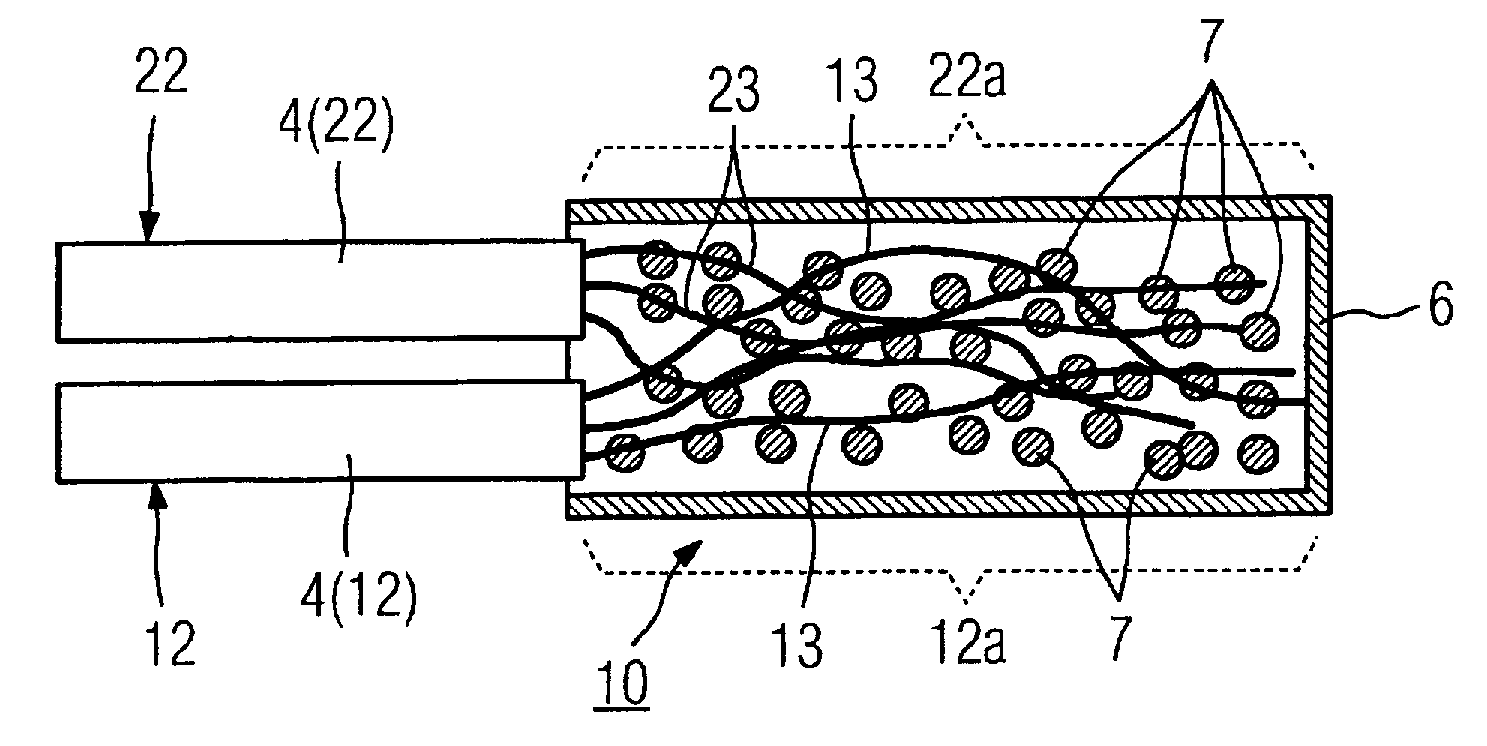Superconductive connection of the end pieces of two superconductors and method for manufacturing this connection
a superconductors and end piece technology, applied in the direction of superconducting magnets/coils, connection contact material, magnetic bodies, etc., can solve the problems of affecting the production of superconducting connections, unable to maintain current operation, and unable to achieve superconducting properties, etc., to achieve high magnetic induction, simple production method, and simple effect of connection
- Summary
- Abstract
- Description
- Claims
- Application Information
AI Technical Summary
Benefits of technology
Problems solved by technology
Method used
Image
Examples
Embodiment Construction
[0034]The superconductors in FIG. 1 are of a known type. They can be of the type known as single core (monocore) superconductors or (as shown in FIG. 1) the type known as multi-filament superconductors. Such a superconductor 2 has multiple superconductive conductor leads or filaments 3i that are embedded in a matrix 4 made of normally-conductive material. All known LTC or HTC superconductive materials (for example NbTi, Nb3Sn, MgB2, YBa2Cu3Ox or (Bi,Pb)2Dr2Ca2Cu3Oy) are suitable as material for the conductor leads 3i. Materials known for the matrix are either elementary (for example Cu, Ni, Ag, Fe, Wo, Al) or alloys, in particular of these elements (for example CuNi, AgMg, CuSn, CuZn or NiCr).
[0035]In order to be able to contact at least two end pieces of corresponding multi-filament superconductors or even monocore superconductors with one another according to the invention in a low-resistance manner, with a connection or, respectively, connection device, in the region of the end p...
PUM
| Property | Measurement | Unit |
|---|---|---|
| critical temperature | aaaaa | aaaaa |
| temperature | aaaaa | aaaaa |
| temperature | aaaaa | aaaaa |
Abstract
Description
Claims
Application Information
 Login to View More
Login to View More - R&D
- Intellectual Property
- Life Sciences
- Materials
- Tech Scout
- Unparalleled Data Quality
- Higher Quality Content
- 60% Fewer Hallucinations
Browse by: Latest US Patents, China's latest patents, Technical Efficacy Thesaurus, Application Domain, Technology Topic, Popular Technical Reports.
© 2025 PatSnap. All rights reserved.Legal|Privacy policy|Modern Slavery Act Transparency Statement|Sitemap|About US| Contact US: help@patsnap.com


